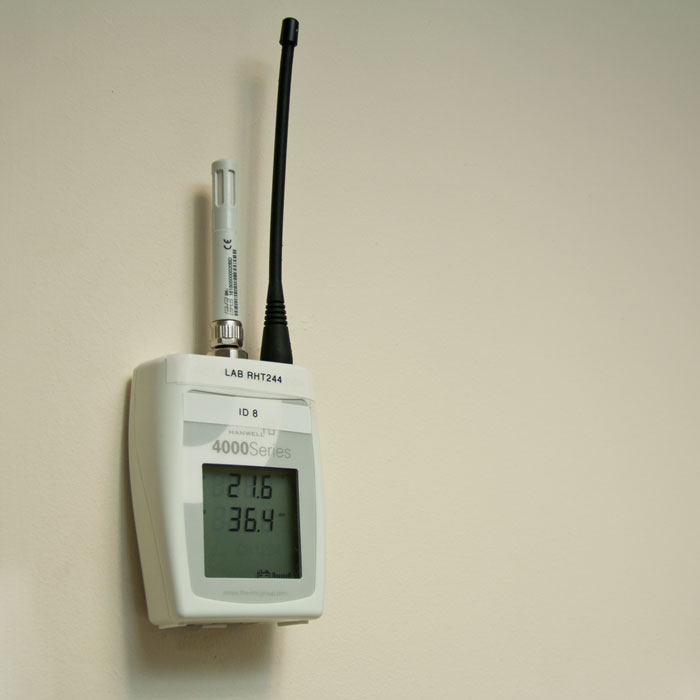With advances in mobile communication, wireless technology is becoming more accepted in everyday life. This has not passed by the instrumentation world, but what is a wireless instrument network and how does it operate?…
Common wireless instrument networks include:
- Point to Point Wireless
- Wireless Mesh Networks
Point to Point wireless is a fairly simple idea. The Hanwell system offered by Fluidic utilises a 434MHz frequency to communicate information between the transmitter and receiver. The transmitter may include a sensor (e.g. Relative Humdity, Temperature etc) or may simply take a basic analogue input from an existing transmitter. The information is encoded for security and sent wirelessly to its receiver. The receiver decodes this data, which is typically displayed (and logged) on a local laptop or PC. Due to the relatively “slow” frequency of this technology, information is limited but can travel far. That is to say only the process variable (the “4-20mA information”) is transferred, which can travel upto 3km in an ideal, clear line-of-sight installation. Signal repeaters may be used to extend the range where necessary. The information is transferred in frequent intervals, typically every few minutes. This leans the point-to-point wireless technology Fluidic offers towards facility monitoring applications. Warehouse monitoring and cleanroom / pharmaceutical lab monitoring are typical applications with pre-existing install bases.
As Honeywell Field Product partners, Fluidic also offer Wireless Mesh Networks for more industrial applications. Here a Field Device Access Point (FDAP) is used as a central receiver/transmitter to distribute information throughout the network. In addition, the wireless transmitter itself may be used as part of the information distribution path, if user-enabled. The FDAP is a dedicated distribution point, generally powered locally. This allows very fast transfer of data every second. For this reason, ISA100 wireless networks are unique to encroaching process control conditions rather than being limited to simple monitoring applications.
Using the transmitters as a secondary route will impose on transmitter battery life and transfer speed, but does add the option of redundancy in case of an FDAP outage. Where the transmitter is not selected to be used as a distribution point, battery life is upto 10 years. FDAPs themselves can be doubled up for redundancy, ensuring reliability. This type of wireless mesh network complies to the ISA100 system running on 2.4GHz frequency. This relatively fast transfer allows much more information to be sent, including process variable and diagnostics. Coverage in an ideal install will be limited to around 300m between “hops”, of course as part of a “mesh network” several hops would offer very reasonable coverage.
All information from the ISA100 mesh network is eventually passed back to the Wireless Device Manager (WDM). Information is gathered locally and can be incorporated into the user’s Distributed Control System (DCS) where desired. The WDM offers a graphical interface for the instrument tech. Image files (e.g. of P&ID drawings) can be used as the GUI backdrop onto which the user may position the mesh network arrangement and instrument locations throughout the plant. Again, in critical applications, 2x WDMS may be installed to offer redundancy within the system.
For more information on wireless instrumentation, please call your local Fluidic office. To receive more technical application notes like this please click the subscribe link below.

